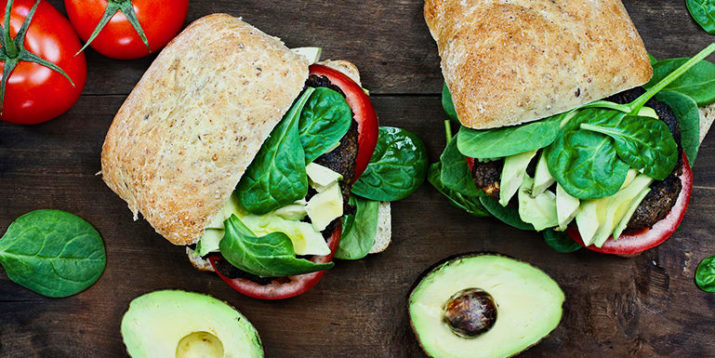What You Need to Know About MUFAs

MUFAs may sound like a character from The Lion King, but it’s just shorthand lingo nutritionists use because saying “monounsaturated fatty acids” is a word workout.
Here’s what you need to know about MUFAs, complete with factoids and recipe ideas to impress your dinner guests, on and off the plate.
What Are MUFAs?

MUFAs are one of the healthy fats, and they star in all kinds of wholesome foods, from olive oil to avocados.
To learn how they got their name, we’ll have to dig a little into the science (we’ll keep it brief):
Fats are a type of molecule. These molecules are made up of a series of atoms (think of it as a chain), and the thing that connects one atom to the next is called a bond.
Single bonds are the simplest kind of connector. Single bonds let the chain of atoms neatly stack on itself. The result is a fat molecule that is tightly packed together and dense; these are called “saturated.” These fats are solid at room temperature (e.g. butter, coconut oil).
Double bonds are more complex. Double bonds create kinks in the chain. They do not stack evenly. Given that they enjoy a little more wiggle room, fats with double-bonds are liquid at room temperature. Any fat with a double bond is called “unsaturated.”
Monounsaturated fats are so-named because they have one double bond (mono = one). Thus endeth the science.
What Do MUFAs Do?
Replacing saturated fats with MUFAs is part of a balanced diet, according to the American Heart Association. MUFAs also provide essential nutrients for good health most Americans fall short on, like the antioxidant vitamin E, which also supports the immune system.
MUFAs help the body absorb fat-soluble vitamins A, D, E, and K, which need fat in order for the body to use them. For example, in a salad, either the dressing or nuts mixed into the salad can function to help your body absorb kale’s vitamin K, carrot’s vitamin A, and tomato’s lycopene (also fat-soluble).
The Dietary Guidelines for Americans 2020–2025 recommend that about one in every four calories* should come from fats to ensure the body gets enough of those fat-soluble vitamins — preferably from healthy fats like MUFAs. (*total fat intake is 25 to 35 percent of calories (1 in 4) for most age groups).
What Foods Have MUFAs?

Here’s the fun part — MUFAs are in great-tasting foods. Some of the best sources are olive oil, safflower oil, avocado oil, pistachios, almonds, olives, and avocados. These foods have more MUFAs than saturated fat by far.
But just so you know, most oils and naturally fatty foods have a blend of both unsaturated and saturated fats; just make sure the balance tips in favor of unsaturated fats.
How to get more MUFAs in your life:
- Bread skinless chicken breast or fish with crushed pistachios.
- Grill avocado slices and use to top black-bean burgers, tomato soup or a pan-seared white fish taco, or make a guacamole.
- Drizzle olive oil over warmed halved tomatoes, season to taste.
- Stir-fry carrots, broccoli, and red pepper strips in safflower oil with a few drops of sesame oil (a little goes a long way) as a side dish or a main.
- Dip apple slices in a lower sugar strained yogurt like Siggi’s, and sprinkle with crushed almonds or flaxseed and cinnamon.
- Mince green olives, roasted bell peppers, capers, anchovies, and parsley, then combine with whole-grain bread crumbs, and just enough olive oil to create a spread-like consistency — try it with fish, crostini, or cucumber rounds.
- Simple works, too: Munch on sunflower seeds, or dip pieces of a whole-wheat baguette in olive oil.
There you have it. Now you know why they’re called MUFAs, why they’re healthy, where to find them in food, and a few ideas to get you started in the kitchen. Just remember MUFAs, like other fats, provide nine calories per gram and thus should be consumed in moderation.
Now you’re armed to throw a MUFA-rich dinner party, complete with fun facts and delicious dishes.
